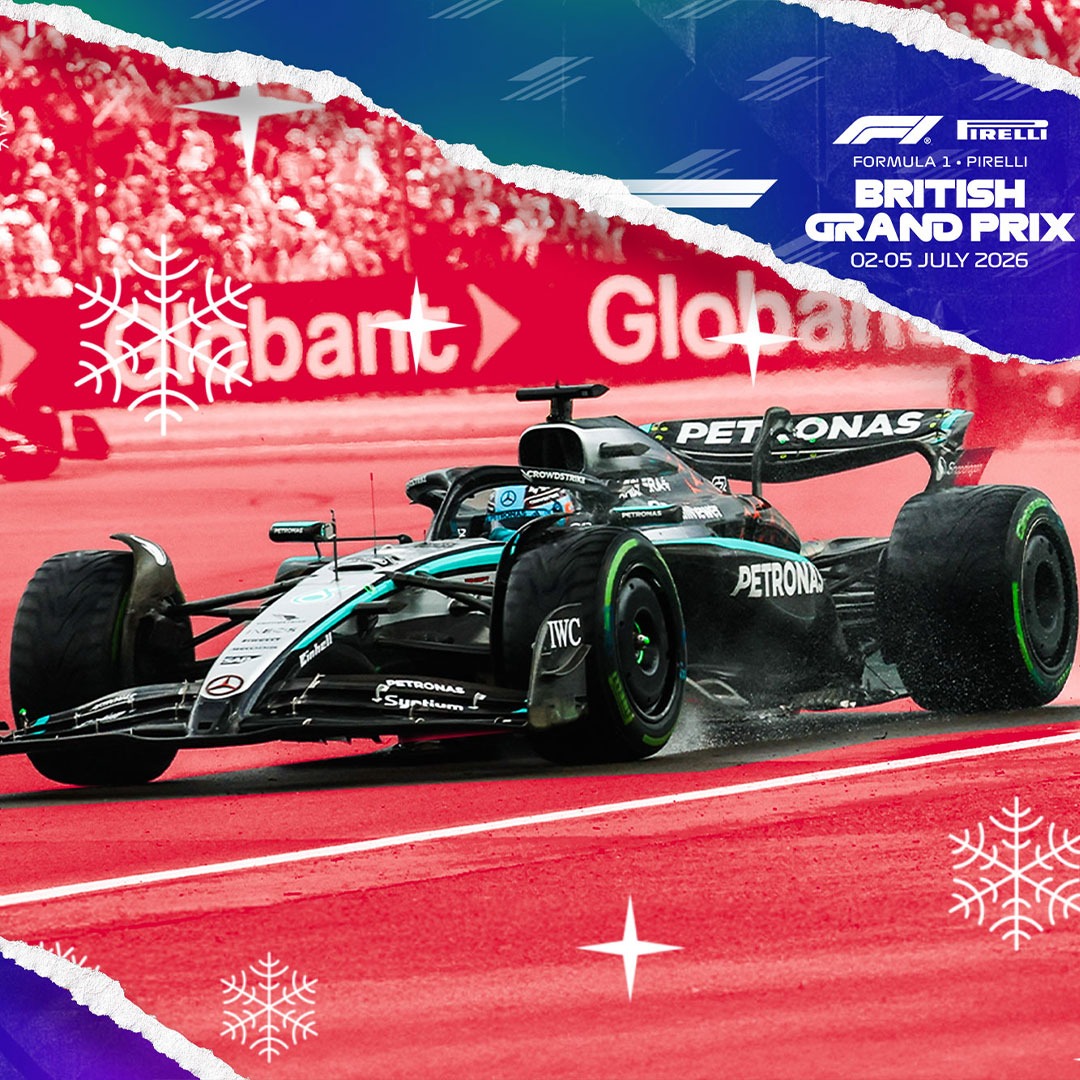
Seven of the best drives in F1 history
14 May 2025To celebrate 75 years of the Formula 1 World Championship, we’re not just looking back at the best seasons. We’re also spotlighting the most extraordinary single-race performances the sport has ever seen.
From fearless wet-weather masterclasses to epic last-to-first comebacks, these are the races that showed how great the greats truly were.
A Silverstone masterclass: Lewis Hamilton, 2008 British Grand Prix
In front of his adoring home crowd and under leaden skies, Lewis Hamilton delivered one of the most dominant wet-weather wins of the modern era at Silverstone in 2008.
As others tiptoed through the standing water, Hamilton danced through the spray in his McLaren, pulling out a lead of over a minute by the time the chequered flag fell.
On a day when top-tier drivers like Kimi Räikkönen, Felipe Massa and Fernando Alonso struggled to stay afloat, Hamilton was in a class of his own.
Having got the better of Mark Webber and Räikkönen into Turn 1, he set about getting past team-mate Heikki Kovalainen, whom he duly dispatched on Lap 5. From then on, he didn’t look back.
Lapping all but the other podium finishers of Nick Heidfeld and Rubens Barrichello, Hamilton took one of the most commanding victories of the 21st century.
The result revitalised his championship challenge to put him on equal points with Massa and Räikkönen.
Last to first: Kimi Räikkönen, 2005 Japanese Grand Prix
F1’s old one-lap shootout qualifying format saw Michael Schumacher, Alonso and Räikkönen set their laps in tricky conditions, leaving them 14th, 16th and 17th on the grid respectively.
In the race itself, Kimi marched relentlessly forward, carving his way through the field with blistering lap times, bold overtakes and unwavering determination.
Having leapfrogged Schumacher and Alonso during the pitstops, the Finn continued his climb up the order. After his final pitstop, he set about closing a mammoth gap to race leader Giancarlo Fisichella, and he did just that.
The climax came on the final lap, when he blasted past Giancarlo Fisichella around the outside of Turn 1 to seize what is considered Kimi’s finest victory in F1.
Four-stopper: Michael Schumacher, 2004 French Grand Prix
Magny-Cours was a track renowned for overtaking difficulty and in 2004, Schumacher and Ferrari took a bold gamble on a four-stop strategy to outfox Fernando Alonso and the blistering one-lap pace of the Renault.
With the Spaniard launching from pole into an early lead, the Ferrari pit wall opted to under fuel Michael for his first two stops, and that forced Renault’s hand into doing the same for Fernando.
The German made the most of the opportunity his strategists had afforded him, setting quali lap after quali lap whenever he got a sniff at clear air.
Four pit stops in a dry race is unheard of nowadays, but in 2004 Schumacher and Ferrari pulled a blinder to win the French Grand Prix, which, on the face of it, should’ve been Renault’s.
The rain master: Michael Schumacher, 1996 Spanish Grand Prix
The Williams was the class of the field in 1996, but nobody told Schumacher that before the start of the Spanish Grand Prix.
After qualifying third, he dropped back outside the top five at the start, but surged forward in the torrential downpour, overtaking with ease and pulling out a colossal lead.
While others floundered, Schumacher was up to three seconds a lap faster than the field, finishing 45 seconds clear of Jean Alesi in second.
It was his first win for Ferrari and one that laid the groundwork for the dynasty that was to come. This was the race where Schumacher’s legend in red truly began.
THAT opening lap: Ayrton Senna, 1993 European Grand Prix
If one race captured the sheer genius of Ayrton Senna in wet conditions, it was the 1993 European Grand Prix at Donington Park.
Starting from fourth on an extremely slippery circuit, Senna produced arguably the greatest opening lap in F1’s history.
Senna made light work of Schumacher on the exit of the first corner, before taking third from Karl Wendlinger – who’d jumped the Brazilian off the line – at the old hairpin.
Damon Hill was next on his list, and he relegated the Brit to third just three corners later. Finally, it was Alain Prost’s turn, as Senna dove to the inside of the Melbourne Hairpin to seize the lead.
In just 11 corners, he had gone from fifth to first in a masterclass of judgement and traction.
The rest of the race saw Senna dancing around backmarkers and managing rapidly changing conditions with ease, lapping all but Hill’s Williams by the chequered flag.
It was undoubtedly one of the finest examples of Senna’s supernatural feel for grip.
The return: Niki Lauda, 1976 Italian Grand Prix
Although he didn’t take the title that year, Niki Lauda’s 1976 season is the stuff of legend.
His comeback at Monza just six weeks after his near-fatal crash at the Nürburgring stands as one of the most courageous drives motorsport has ever seen.
With burns to his face and body still healing, Lauda strapped back into his Ferrari, risking it all to take the fight to James Hunt.
Against expectations, he qualified fifth and finished fourth, fending off intense pressure, all with limited vision.
It wasn’t a win, or even a podium, but it was a triumph. It kept his title hopes alive.
Mastering the Nordschleife: Jackie Stewart, 1968 German Grand Prix
They don’t call the Nürburgring the ‘Green Hell’ for nothing, which makes Jackie Stewart’s performance there in 1968 all the more impressive, remaining one of the most dominant drives in F1 history.
On a rain-lashed, fog-covered day, Stewart remarkably drove through treacherous conditions with a broken wrist and having launched from sixth on the grid, showed his mettle to build a lead of over four minutes to Graham Hill by the end of the race.
While many of his rivals spun out or struggled to keep it out of the unforgiving barriers, Stewart tamed the 20-kilometre circuit, leaving the rest of the field trailing in his spray.













